| Listing 1 - 10 of 12 | << page >> |
Sort by
|
Book
ISBN: 0520072677 9780520072671 Year: 1991 Publisher: Berkeley, CA ; Los Angeles, CA ; London : University of California Press,
Abstract | Keywords | Export | Availability | Bookmark
 Loading...
Loading...Choose an application
- Reference Manager
- EndNote
- RefWorks (Direct export to RefWorks)
Architecture, Domestic --- Architecture, Roman --- Mosaics, Roman --- Mural painting and decoration, Roman --- Architecture domestique --- Architecture romaine --- Mosaïque romaine --- Peinture et décoration murales romaines --- -Architecture, Domestic --- -Mosaics --- -Mural painting and decoration --- -Mosaics, Roman --- Mosaics --- Mural painting and decoration --- Mosaïque romaine --- Peinture et décoration murales romaines --- Architecture [Roman ] --- Italy --- Architecture [Domestic ] --- Mural painting and decoration [Roman ] --- Mosaics [Roman ] --- -Architecture [Roman ] --- Roman mural painting and decoration --- Roman architecture --- Mural painting and decoration, Roman - Italy --- Architecture, Domestic - Italy --- Architecture, Roman - Italy --- Mosaics - - Italy --- Mural painting and decoration - - Italy --- Mosaics, Roman - - Italy
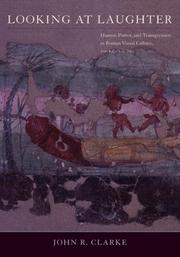
ISBN: 9780520237339 0520237331 Year: 2007 Publisher: Berkeley : University of California Press,
Abstract | Keywords | Export | Availability | Bookmark
 Loading...
Loading...Choose an application
- Reference Manager
- EndNote
- RefWorks (Direct export to RefWorks)
In this fresh, accessible, and beautifully illustrated book, his third to examine an aspect of Roman visual culture, John R. Clarke explores the question, "What made Romans laugh?" 'Looking at Laughter 'examines a heterogeneous corpus of visual material, from the crudely obscene to the exquisitely sophisticated and from the playful to the deadly serious--everything from street theater to erudite paintings parodying the emperor. Nine chapters, organized under the rubrics of Visual Humor, Social Humor, and Sexual Humor, analyze a wide range of visual art, including wall painting, sculpture, mosaics, and ceramics. Archaeological sites, as well as a range of ancient texts, inscriptions, and graffiti, provide the background for understanding the how and why of humorous imagery. This entertaining study offers fascinating insights into the mentality of Roman patrons and viewers who enjoyed laughing at the gods, the powers-that-be, and themselves.
Wit and humor in art --- Arts, Roman --- Arts, Roman. --- Wit and humor in art. --- Laughter in art --- Humour dans l'art --- Arts romains --- Rire dans l'art
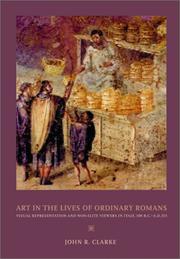
ISBN: 0520219767 Year: 2003 Volume: *2 Publisher: Berkeley (Calif.) University of California Press
Abstract | Keywords | Export | Availability | Bookmark
 Loading...
Loading...Choose an application
- Reference Manager
- EndNote
- RefWorks (Direct export to RefWorks)
Art, Roman --- Social classes in art. --- Social status --- Themes, motives. --- Social aspects. --- Classes sociales dans l'art --- Social classes in art --- Sociale klassen in de kunst --- Art [Roman ] --- Themes, motives --- Social aspects --- Rome
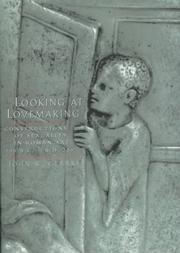
ISBN: 0520200241 9780520229044 0520229045 Year: 1998 Publisher: Berkeley ; London : University of California Press,
Abstract | Keywords | Export | Availability | Bookmark
 Loading...
Loading...Choose an application
- Reference Manager
- EndNote
- RefWorks (Direct export to RefWorks)
Looking at Lovemaking depicts a sophisticated, pre-Christian society that placed a high value on sexual pleasure and the art that represented it. Clarke shows how this culture evolved within religious, social, and legal frameworks that were vastly different from our own and contributes an original and controversial chapter to the history of human sexuality. What did sex mean to the ancient Romans? In this lavishly illustrated study, John R. Clarke investigates a rich assortment of Roman erotic art to answer this question. He reevaluates our understanding of Roman art and society in a study informed by recent gender and cultural studies, and focusing for the first time on attitudes toward the erotic among both the Roman non-elite and women. This splendid volume is the first study of erotic art and sexuality to set these works--many newly discovered and previously unpublished--in their ancient context and the first to define the differences between modern and ancient concepts of sexuality using clear visual evidence.
Art, Roman --- Erotic art --- Sex in art. --- Themes, motives. --- Seksualiteit in de kunst --- Sex in art --- Sexe dans l'art --- Art romain --- Art érotique --- Sexualité dans l'art --- Themes, motives --- Thèmes, motifs --- Art [Roman ] --- Rome --- Sex in the arts --- Sexuality in art --- Art, Erotic --- Art, Immoral --- Erotic art, Primitive --- Roman art --- Art --- Erotica --- Classical antiquities --- Art érotique
Book
ISBN: 1282357050 9786612357053 0520929837 9780520929838 9781282357051 Year: 2007 Publisher: Berkeley University of California Press
Abstract | Keywords | Export | Availability | Bookmark
 Loading...
Loading...Choose an application
- Reference Manager
- EndNote
- RefWorks (Direct export to RefWorks)
In this fresh, accessible, and beautifully illustrated book, his third to examine an aspect of Roman visual culture, John R. Clarke explores the question, "What made Romans laugh?" Looking at Laughter examines a heterogeneous corpus of visual material, from the crudely obscene to the exquisitely sophisticated and from the playful to the deadly serious—everything from street theater to erudite paintings parodying the emperor. Nine chapters, organized under the rubrics of Visual Humor, Social Humor, and Sexual Humor, analyze a wide range of visual art, including wall painting, sculpture, mosaics, and ceramics. Archaeological sites, as well as a range of ancient texts, inscriptions, and graffiti, provide the background for understanding the how and why of humorous imagery. This entertaining study offers fascinating insights into the mentality of Roman patrons and viewers who enjoyed laughing at the gods, the powers-that-be, and themselves.
Arts, Roman. --- Wit and humor in art. --- Roman arts --- Humor in art
Book
ISBN: 0585139695 0520914449 9780520914445 9780585139692 0520084292 9780520084292 0520072677 9780520072671 Year: 1991 Publisher: Berkeley, Calif.
Abstract | Keywords | Export | Availability | Bookmark
 Loading...
Loading...Choose an application
- Reference Manager
- EndNote
- RefWorks (Direct export to RefWorks)
In this richly illustrated book, art historian John R. Clarke helps us see the ancient Roman house "with Roman eyes." Clarke presents a range of houses, from tenements to villas, and shows us how enduring patterns of Roman wall decoration tellingly bear the cultural, religious, and social imprints of the people who lived with them.In case studies of seventeen excavated houses, Clarke guides us through four centuries of Roman wall painting, mosaic, and stucco decoration, from the period of the "Four Styles" (100 B.C. to A.D. 79) to the mid- third century. The First Style Samnite House shows its debt to public architecture in its clear integration of public and private spaces. The Villa of Oplontis asserts the extravagant social and cultural climate of the Second Style. Gemlike Third-Style rooms from the House of Lucretius Fronto reflect the refinement and elegance of Augustan tastes. The Vettii brothers' social climbing helps explain the overburdened Fourth-Style decoration of their famous house. And evidence of remodelling leads Clarke to conclude that the House of Jupiter and Ganymede became a gay hotel in the second century.In his emphasis on social and spiritual dimensions, Clarke offers a contribution to Roman art and architectural history that is both original and accessible to the general reader. The book's superb photographs not only support the author's findings but help to preserve an ancient legacy that is fast succumbing to modern deterioration resulting from pollution and vandalism.
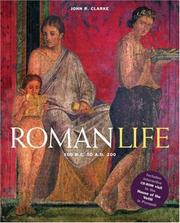
ISBN: 9780810993396 0810993392 Year: 2007 Publisher: New York (N.Y.) : Abrams,
Abstract | Keywords | Export | Availability | Bookmark
 Loading...
Loading...Choose an application
- Reference Manager
- EndNote
- RefWorks (Direct export to RefWorks)
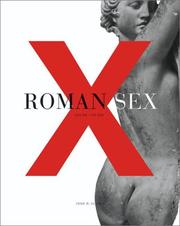
Abstract | Keywords | Export | Availability | Bookmark
 Loading...
Loading...Choose an application
- Reference Manager
- EndNote
- RefWorks (Direct export to RefWorks)
Art, Roman --- Erotic art --- Sex customs in art --- Themes, motives --- #A0411HI
Book
ISBN: 0814713769 Year: 1979 Publisher: New York : Published by New York University Press for the College Art Association of America,
Abstract | Keywords | Export | Availability | Bookmark
 Loading...
Loading...Choose an application
- Reference Manager
- EndNote
- RefWorks (Direct export to RefWorks)
Mosaics, Roman. --- Pavements, Mosaic --- Mosaics, Roman --- Mosaic pavements --- Floors --- Mosaics --- Mosaic floors
Book
ISBN: 3657779191 Year: 2015 Publisher: Paderborn, Germany : Wilhelm Fink : Ferdinand Schöningh Verlag,
Abstract | Keywords | Export | Availability | Bookmark
 Loading...
Loading...Choose an application
- Reference Manager
- EndNote
- RefWorks (Direct export to RefWorks)
A timeless essay on the underlying structures of classical art and architecture. This fundamental essay in the tradition of Vienna-School Structuralism traces the religious and sexual drives that gave rise to the distinct forms of Greek and Roman art and architecture. Kaschnitz demonstrates how the worship of male ancestors with upright stone monuments led to the Greek temple and classical sculpture--impenetrable forms dominating space and the viewer. Worship of the life-giving fertility of the mother-goddesses required underground, cave-like spaces that underlie the volumetric interiors of Roman and Etruscan temples that surround and enclose the viewer. The extensive bibliography, invoking a wide range of sources, provides invaluable insight into the wide range of disciplines that Kaschnitz explored, from comparative ethnography to folk psychology. Kaschnitz-Weinbergs Essay von 1944, einer der Grundlagentexte der Strukturforschung, befasst sich mit der Religion und Architektur der Megalithkultur, um zu erklären, warum Griechen und Römer ganz unterschiedliche Konzeptionen von Form und Raum in Architektur und Bildhauerei realisierten. Kaschnitz setzt die griechische Konzeption mit prähistorischen Kulturen in Beziehung, die Ahnen und Gottheiten in phallischen, aufrechten Monumenten verehrten. Er entdeckt die Vorgeschichte der römischen Konzeption in der Höhle, umhüllenden Räumen, die den Uterus der Mutter Erde evozierten. Dem Originaltext der englischen Erstübersetzung sind eine Einführung des Herausgebers, rekonstruierte Anmerkungen und eine umfassende Bibliographie beigegeben.
Art, Ancient --- History.
| Listing 1 - 10 of 12 | << page >> |
Sort by
|

 Search
Search Feedback
Feedback About UniCat
About UniCat  Help
Help News
News